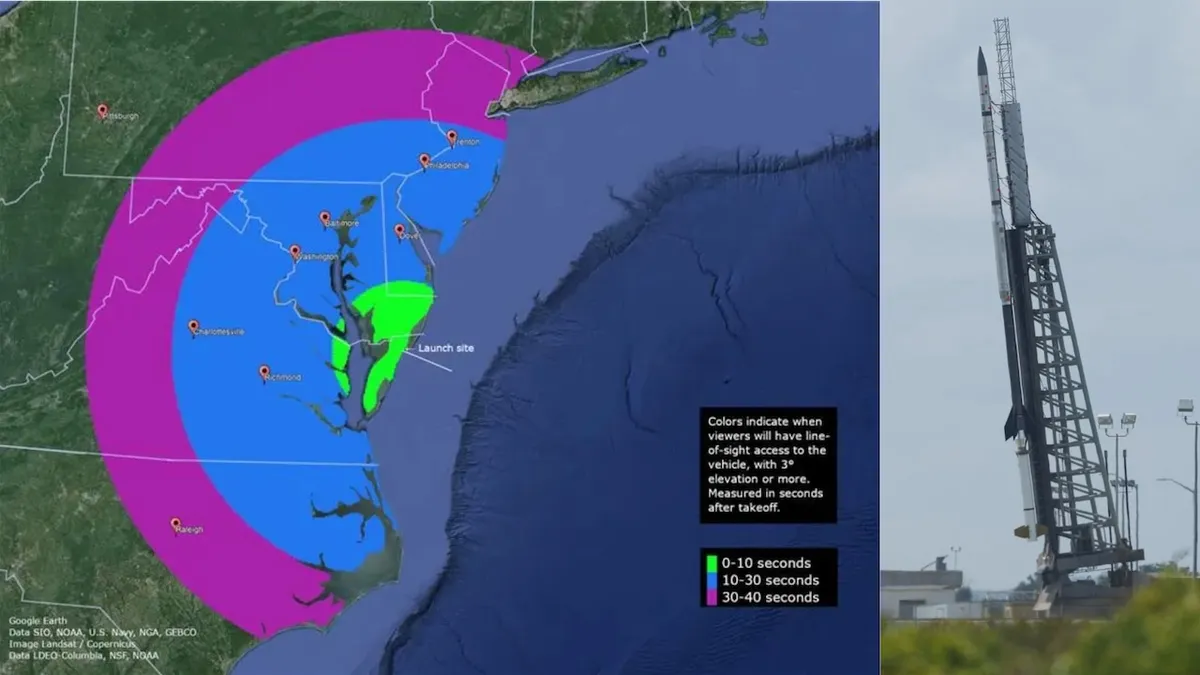
NASA is gearing up for an exciting launch that will see three rockets take to the skies, with two of them expected to create stunning colorful vapor trails. This spectacular event is set to be visible across multiple mid-Atlantic states, including New Jersey, Pennsylvania, and New York. The launch window, delayed last week due to Hurricane Erin, opens at 10 p.m. on Monday and runs until 3 a.m. on Tuesday, taking place at NASA's Wallops Flight Facility in Virginia.
The first two rockets are scheduled to launch within a minute of each other. They will release vibrant vapor tracers, similar to the compounds used in fireworks. These colorful tracers will aid scientists in photographing and mapping wind patterns in the upper atmosphere, providing valuable data for further research. Approximately five minutes after the initial launches, a third rocket, equipped with specialized lidar technology, will take flight.
This third rocket's mission is particularly noteworthy, as it will utilize a laser tuned to excite sodium atoms that are naturally found in the atmosphere, originating from meteor dust. By inducing fluorescence in this sodium layer, researchers will be able to track atmospheric movements and measure density changes over time. The mission, known as the Turbulent Oxygen Mixing Experiment Plus (TOMEX+), is focused on the mesopause, a crucial boundary layer located approximately 53 to 65 miles above the Earth's surface.
The mesopause is a fascinating but challenging area for researchers to study. It sits at an altitude that is too high for weather balloons and too low for satellites, making it a unique zone of interest. "The mesopause is the coldest layer of our atmosphere," states NASA, with temperatures plummeting to nearly minus 148 degrees Fahrenheit. This region is also where night-shining clouds form and where energy from weather patterns at lower altitudes transfers into space, creating turbulence that can impact satellite operations.
The TOMEX+ mission is being led by Jim Clemmons, a physics and astronomy professor at the University of New Hampshire. This mission builds upon a previous experiment conducted in 2000, leveraging significant technological advancements. The coordinated sequence of three sounding rockets will provide what NASA describes as "the clearest 3D view yet of turbulence at the edge of space." This research has the potential to enhance our understanding of high-altitude cloud formation, satellite drag, and atmospheric processes on other planets.
Although the Wallops Visitor Center will not open for public viewing, NASA is committed to sharing this remarkable event with the world. A livestream of the launch will be available on YouTube, starting five minutes before the first launch, allowing enthusiasts and scientists alike to witness this groundbreaking event from their homes.